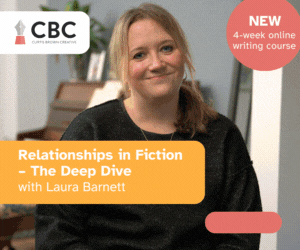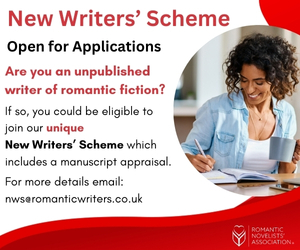Hints & Tips For New Writers #12
18 January 2019
 So we all know that writing is basically a repetitive cycle of optimism and self-loathing (and by the way, happy new year!) but now that the holidays are over we’re probably all facing the same problem of getting back to grips with our writing. Which can go well or… not. Sometimes absence genuinely does make the heart grow fonder and our WIP is much than we remembered. Other times, it all seems utterly worthless and not worth the effort of revising. When that happens, we might think of going for a walk or changing our writing environment to bounce us out of our trough of despair, but maybe it’s worth trying something a little closer to home first.
So we all know that writing is basically a repetitive cycle of optimism and self-loathing (and by the way, happy new year!) but now that the holidays are over we’re probably all facing the same problem of getting back to grips with our writing. Which can go well or… not. Sometimes absence genuinely does make the heart grow fonder and our WIP is much than we remembered. Other times, it all seems utterly worthless and not worth the effort of revising. When that happens, we might think of going for a walk or changing our writing environment to bounce us out of our trough of despair, but maybe it’s worth trying something a little closer to home first.
The other week I tweeted about how changing your font could change your whole book. I was being slightly facetious, but I genuinely think there’s some truth behind this theory. Changing your font style obviously won’t change the quality of the words themselves, but it can change the way you read them. It can change your whole attitude. And before you dismiss the idea, think of those times when you’ve been put off reading a book because of a too-small, too bizarre font. Fonts matter.

If that doesn’t work, maybe try printing your work out? I know this advice is bad for our stationary budgets and the environment so maybe don’t do it too often, but it’s another way of getting a new perspective. My optometrist husband once told me all about the different ways in which the brain translates printed and electronic words. Unfortunately he now denies any memory of this conversation so I’ve had to do my own research this month, which actually wasn’t too hard because there are a lot of studies on the subject. Personally I don’t mind either paper or Kindle, but it turns out there is a difference in the way we read the two formats. Not in enjoyment or in the way we empathise or react emotionally to a story, but in terms of memory.
A Norwegian study in 2014 found that people who read the paperback version of a book could recall the plot in significantly greater detail than those who read it electronically. Whilst the reasons for this aren’t clear (it could simply be that on a screen we’re more prone to distractions and therefore dip in and out of books more often), as a writer this could pose a definite problem, especially when it comes to plot details. On a screen we can only see a small section of our work at a time. It’s hard to get a sense of the whole thing until it’s printed and from personal experience, I know I spot a lot more mistakes (repetition especially) when I edit a paper copy.
So this month’s hints and tips is not to despair when your writing might seem bad. Maybe it is, but then again, maybe it isn’t? Everyone is their own harshest critic so maybe try a new perspective instead. Print your work out or try a new font (just remember to make everything look standard before you submit it to an editor/agent). And if that doesn’t work then look out for next month’s blog on the best books on writing by writers (and if you have any suggestions, please do e-mail me at jenni.fletcher.author@gmail.com – I’d love to get recommendations!)
Happy writing!
*
 Jenni Fletcher is the author of five historical romances for Mills & Boon and a visiting tutor at Bishop Grosseteste University. Her sixth book, The Viscount’s Veiled Lady, is out next week (since you asked…)
Jenni Fletcher is the author of five historical romances for Mills & Boon and a visiting tutor at Bishop Grosseteste University. Her sixth book, The Viscount’s Veiled Lady, is out next week (since you asked…)




